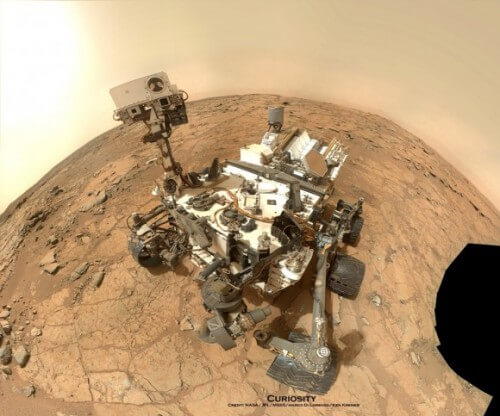According to NASA researchers, this means that there are no methane-emitting bacteria on Mars today. However, one of the puzzles is where does the methane that is still in the atmosphere and originated in meteorites go?

NASA's Curiosity rover found no sign of methane on the Red Planet, but the agency stresses that methane is only one marker of possible life on Mars, and that other markers may be found.
"The finding, or rather the lack of the finding, reduces the chance of finding methane-emitting bacteria on Mars today, but it only answers one type of bacterial metabolism," says Michael Meyer, the chief scientist on behalf of NASA in the Mars exploration missions. "As far as we know, there are many types of terrestrial bacteria that do not make methane."
Curiosity (intended to search for conditions for life but not life itself) 'smelled' the atmosphere six times in an attempt to find methane between October 2012 and June 2013. It saw no sign of the molecule, which has already been discovered in other areas of Mars.
The instrument used, a tunable laser spectrometer, will be able to detect even the smallest concentrations. The scientists estimate that methane should make up 1.3 parts per billion of the Martian atmosphere at most, or only one-sixth of previous estimates.
The findings are intriguing given the fact that other teams discovered methane on Mars in 1999. The Mars Global Surveyor spacecraft that has been operating for over 10 years has created the The chart about the evolution of methane in Mars over three years. Observations from Earth in which the astronomers also performed spectrometric measurements revealed greater amounts of methane in the Martian atmosphere in 2009.
On Thursday, NASA commented that reports of the highest concentration of methane on Mars came from observations made from Earth, and light passing through Earth's atmosphere may have disrupted the measurements. Some previous measurements from Earth indicated the existence of local areas where the concentration of methane reached 45 parts per billion.
"There is no known way in which methane can quickly disappear from the atmosphere," says Sushil Atria, a professor of atmospheric and space sciences at the University of Michigan in Ann Harbor. "Methane is a resistant substance. It lasts hundreds of years in the Martian atmosphere. Without being able to remove it from the atmosphere quickly, our measurements show that it is impossible for methane to be added to the atmosphere by any mechanism, whether biological, geological or by the erosion of organic materials that come from falling meteorites by the ultraviolet radiation.
The researchers estimate that 10-20 tons of methane enter the Martian atmosphere every year.

2 תגובות
Maybe it caught fire and burned to the ground.
Did they really send a robot to Mars or is this another prank by the Americans? Probably another prank.